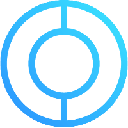-
 Bitcoin
Bitcoin $82,268.0001
-4.04% -
 Ethereum
Ethereum $1,777.8015
-5.02% -
 Tether USDt
Tether USDt $0.9997
-0.03% -
 XRP
XRP $2.0017
-5.57% -
 BNB
BNB $584.3181
-3.27% -
 USDC
USDC $0.9999
-0.02% -
 Solana
Solana $113.9101
-10.18% -
 Dogecoin
Dogecoin $0.1582
-7.95% -
 TRON
TRON $0.2338
-1.55% -
 Cardano
Cardano $0.6241
-8.78% -
 Toncoin
Toncoin $3.5629
-12.05% -
 UNUS SED LEO
UNUS SED LEO $9.3926
0.04% -
 Chainlink
Chainlink $12.4716
-8.37% -
 Stellar
Stellar $0.2537
-5.64% -
 Avalanche
Avalanche $18.0808
-5.86% -
 Sui
Sui $2.2582
-8.11% -
 Shiba Inu
Shiba Inu $0.0...01212
-2.66% -
 Hedera
Hedera $0.1562
-6.92% -
 Litecoin
Litecoin $81.9021
-1.77% -
 Polkadot
Polkadot $3.9168
-4.95% -
 MANTRA
MANTRA $6.2584
-0.81% -
 Bitcoin Cash
Bitcoin Cash $296.8025
-3.05% -
 Bitget Token
Bitget Token $4.4990
-1.96% -
 Dai
Dai $0.9999
0.02% -
 Ethena USDe
Ethena USDe $0.9996
-0.03% -
 Monero
Monero $212.8042
-2.13% -
 Pi
Pi $0.5633
-17.59% -
 Hyperliquid
Hyperliquid $11.1531
-17.45% -
 Uniswap
Uniswap $5.7444
-5.64% -
 Aptos
Aptos $5.0383
-5.12%
How does DAO achieve decentralized governance?
DAOs use blockchain and smart contracts for decentralized governance, with token-based voting ensuring community-driven decisions and transparency.
Apr 01, 2025 at 04:01 pm

Understanding Decentralized Autonomous Organizations (DAOs) and their Governance
Decentralized Autonomous Organizations (DAOs) represent a novel approach to organizational structure, leveraging blockchain technology to achieve decentralized governance. Unlike traditional organizations with centralized control, DAOs distribute power among their participants, typically token holders, enabling collective decision-making. This is achieved through smart contracts, which automate and enforce the rules governing the DAO's operations. The key to understanding how DAOs achieve decentralized governance lies in understanding the role of these smart contracts and the token-based voting mechanisms they facilitate.
The Role of Smart Contracts in DAO Governance
Smart contracts are self-executing contracts with the terms of the agreement between buyer and seller being directly written into lines of code. In the context of DAOs, these contracts define the rules and processes for governance. This includes voting mechanisms, treasury management, and the allocation of resources. Crucially, these contracts operate autonomously, without the need for intermediaries or central authorities. This ensures transparency and immutability, key components of a truly decentralized system. The code itself is publicly auditable, allowing community members to verify its functionality and security.
Token-Based Voting Mechanisms: The Heart of DAO Governance
DAOs typically utilize token-based voting systems to facilitate decision-making. Token holders, essentially the DAO's members, cast votes on proposals using their tokens. The weight of each vote is usually proportional to the number of tokens held. This system ensures that the most invested members have a greater influence on the DAO's direction. However, different DAOs employ various voting mechanisms, such as:
- Simple Majority Voting: Proposals pass if more than 50% of the votes are in favor.
- Weighted Voting: Votes are weighted based on the number of tokens held.
- Quadratic Voting: Allows individuals to cast multiple votes, but with diminishing returns. This aims to give more weight to a wider range of opinions, preventing token whales from dominating the process.
- Liquid Democracy: Members can delegate their voting rights to other trusted members.
These varied approaches allow DAOs to tailor their governance mechanisms to their specific needs and priorities. The choice of voting mechanism significantly impacts the balance between majority rule and minority protection within the DAO.
Proposal Submission and the Governance Cycle
The process of proposing and implementing changes within a DAO typically involves several steps:
- Proposal Submission: Members can submit proposals outlining changes to the DAO's operations, strategy, or treasury allocation. These proposals are usually publicly visible on the DAO's platform.
- Discussion and Amendment: The community discusses the proposal, providing feedback and suggesting amendments. This period allows for collaborative refinement of the proposal before voting.
- Voting Period: Once the discussion concludes, a voting period begins. Token holders cast their votes according to the DAO's predetermined voting mechanism.
- Execution: If the proposal passes, the smart contract automatically executes the changes as defined in the proposal. This automated execution is a key element of the DAO's decentralized nature, removing the need for manual intervention.
This cycle ensures that changes are made through a transparent and community-driven process, minimizing the risk of unilateral decisions by a single entity.
Transparency and Immutability: Cornerstones of Decentralized Governance
The blockchain's inherent transparency and immutability are crucial for maintaining trust and accountability within a DAO. All transactions and votes are recorded on the blockchain, creating a publicly auditable record of the DAO's activities. This prevents manipulation and ensures that all members have access to the same information. The immutability of the blockchain prevents retroactive changes to decisions, fostering confidence in the DAO's governance process.
Challenges in DAO Governance
Despite its advantages, DAO governance faces certain challenges:
- Sybil Attacks: Malicious actors could create multiple accounts to manipulate voting outcomes. Various techniques are used to mitigate this risk, such as identity verification systems.
- Low Participation: Ensuring active participation from a large and diverse community can be difficult. Incentivizing participation through token rewards or other mechanisms is often necessary.
- Complexity: Understanding and navigating the complexities of DAO governance can be challenging for less technically savvy members. User-friendly interfaces and educational resources are crucial for fostering broader participation.
- Security Risks: Smart contract vulnerabilities can be exploited to compromise the DAO's funds or governance. Thorough audits and security best practices are essential to mitigate these risks.
Addressing these challenges is crucial for the continued growth and success of DAOs as a form of decentralized governance.
The Future of DAO Governance
Ongoing research and development in the field are continually improving DAO governance mechanisms. New technologies and approaches are being explored to enhance efficiency, security, and inclusivity. The future of DAO governance likely involves more sophisticated voting mechanisms, improved user interfaces, and stronger security measures. The evolution of DAO governance is an ongoing process, constantly adapting to address emerging challenges and opportunities.
Frequently Asked Questions
Q: What are the benefits of DAO governance over traditional governance models?
A: DAO governance offers increased transparency, immutability, and community participation compared to traditional, centralized models. Decisions are made collectively, reducing the risk of autocratic control.
Q: How can I participate in a DAO's governance process?
A: Typically, participation requires acquiring the DAO's governance token. The amount of influence you have is usually proportional to the number of tokens you hold.
Q: What are the risks associated with DAO governance?
A: Risks include smart contract vulnerabilities, Sybil attacks, low participation rates, and the complexity of the governance process itself.
Q: Are DAOs truly decentralized?
A: While DAOs aim for decentralization, the degree of decentralization can vary. Factors such as token distribution, voting mechanisms, and the level of community participation all influence the extent of decentralization. Some DAOs might be more centralized than others.
Q: How are disputes resolved within a DAO?
A: Dispute resolution mechanisms vary depending on the DAO's rules. Some DAOs might use arbitration, while others rely on community-based dispute resolution processes outlined in their smart contracts.
Q: Can anyone create a DAO?
A: Yes, but creating a successful and well-governed DAO requires careful planning, a clear understanding of smart contract technology, and a strong community. The process often involves developing a governance structure, writing smart contracts, and launching the DAO on a suitable blockchain.
Disclaimer:info@kdj.com
The information provided is not trading advice. kdj.com does not assume any responsibility for any investments made based on the information provided in this article. Cryptocurrencies are highly volatile and it is highly recommended that you invest with caution after thorough research!
If you believe that the content used on this website infringes your copyright, please contact us immediately (info@kdj.com) and we will delete it promptly.
- Jack Dorsey Warns Bitcoin (BTC) Could Lose Its Open Ethos as Institutional Investment Grows
- 2025-04-03 22:45:11
- Kadena Launches Chainweb EVM with 20 New EVM-Compatible Chains
- 2025-04-03 22:45:11
- Currently, Shiba Inu (SHIB) is trading at $0.00001211 after experiencing a 1.65% decrease in the last 24 hours and a 5.03% decrease over the past 30 days. These figures show that while there is short-term selling pressure, the overall medium-term trend sh
- 2025-04-03 22:40:12
- Supermicro Systems with the NVIDIA B200 Outperform the Previous Generation of Systems with 3X the Token Generation Per Second
- 2025-04-03 22:40:12
- Supermicro Systems with the NVIDIA B200 Outperformed the Previous Generation of Systems by Delivering 3X the Token Generation Per Second
- 2025-04-03 22:35:12
- Kevin O'Leary and Dave Portnoy Join the Lineup of Speakers at Consensus Toronto 2025
- 2025-04-03 22:35:12
Related knowledge

Why can the inverted hammer shape appear at the bottom be used as a reversal signal?
Apr 03,2025 at 04:07pm
Inverted Hammer is a common K-line pattern in technical analysis, and is often regarded as a potential reversal signal when it appears at the bottom. This article will explore in detail why an inverted hammer line may be a reversal signal when it appears at the bottom, and provide specific identification and application methods. Basic characteristics of...
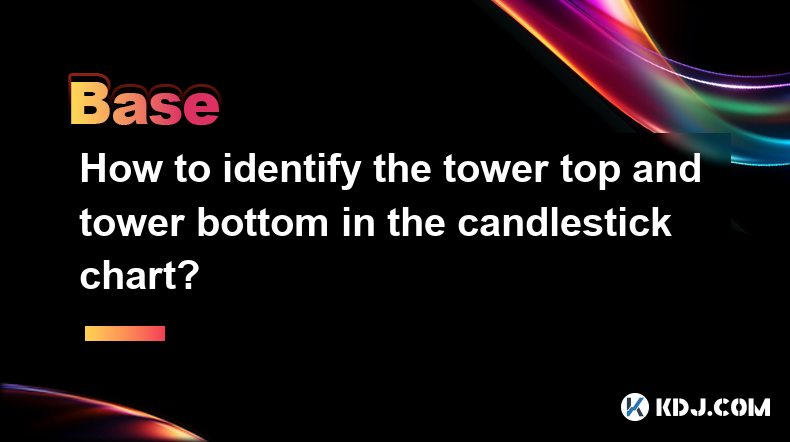
How to identify the tower top and tower bottom in the candlestick chart?
Apr 03,2025 at 04:03pm
In K-line chart analysis, 'Tower Top' and 'Tower Bottom' are two important reversal patterns and are usually used to predict changes in price trends. Identifying these patterns requires careful observation of the price trend and the pattern characteristics of the K-line. Below we will introduce in detail how to identify the 'tower to...
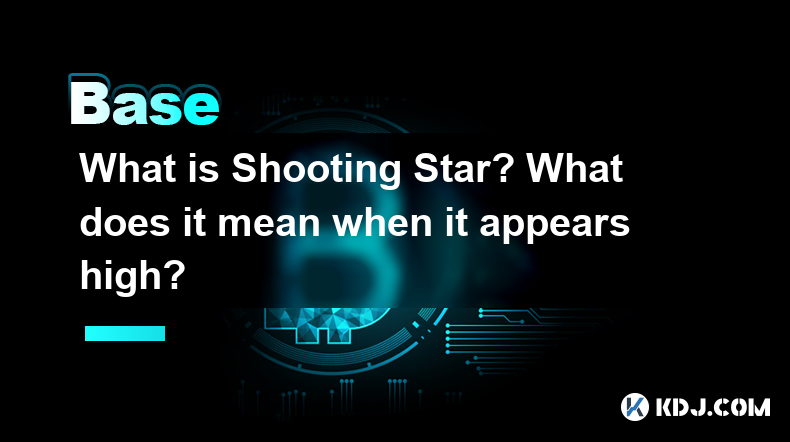
What is Shooting Star? What does it mean when it appears high?
Apr 03,2025 at 03:56pm
In cryptocurrency trading, technical analysis is an important tool to help traders predict future trends of the market. Among them, Shooting Star is a common bearish reversal pattern. This article will give you more details on what 'Shooting Star' is and what it means when it appears at a high level. The definition of 'Shooting Star'Shoo...

What is the difference between dark cloud cover and piercing shape?
Apr 03,2025 at 03:50pm
In the world of cryptocurrency trading, technical analysis is one of the important tools traders use to predict market trends and make trading decisions. Among them, 'Dark Cloud Cover' and 'Piercing Pattern' are two common reversal patterns, which have specific appearance and meaning on the K-line chart. Although they seem similar, there...
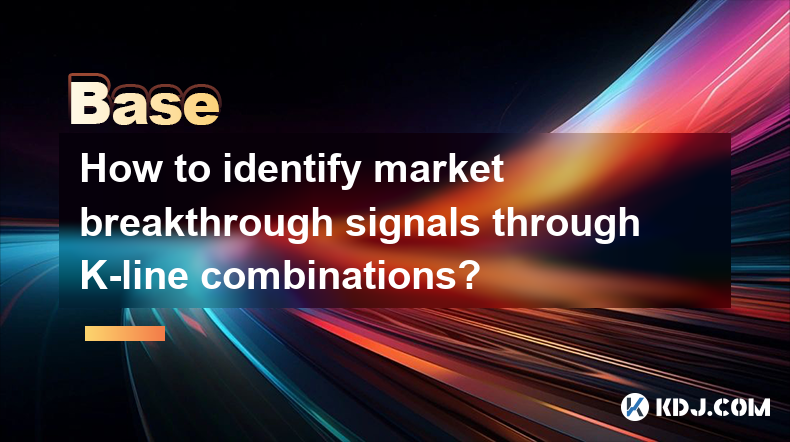
How to identify market breakthrough signals through K-line combinations?
Apr 03,2025 at 03:46pm
In cryptocurrency markets, identifying breakthrough signals is crucial for traders. K-line chart is a commonly used technical analysis tool. By analyzing K-line combinations, traders can more accurately identify the market's breakthrough signals. This article will introduce in detail how to identify the breakthrough signals of the market through the...
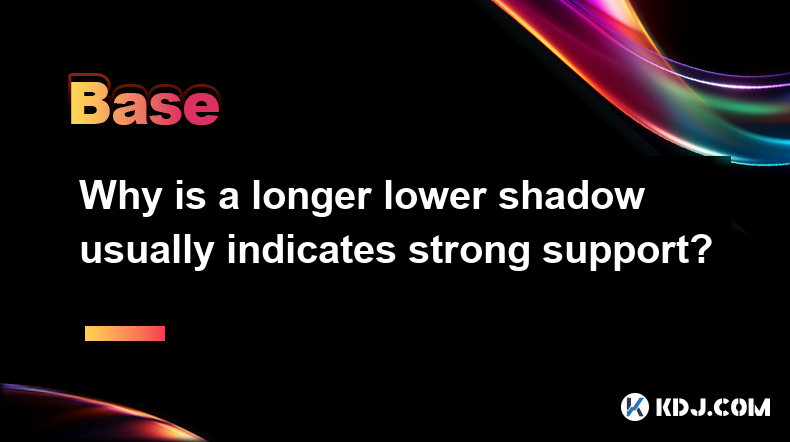
Why is a longer lower shadow usually indicates strong support?
Apr 03,2025 at 03:43pm
The long lower shadow is an important form in technical analysis and is often used by investors to judge the strength of the market's support. The long lower shadow refers to the fact that the lower shadow of a certain K-line is significantly longer than the solid part and the upper shadow in the K-line chart. This pattern usually means that at a ce...

Why can the inverted hammer shape appear at the bottom be used as a reversal signal?
Apr 03,2025 at 04:07pm
Inverted Hammer is a common K-line pattern in technical analysis, and is often regarded as a potential reversal signal when it appears at the bottom. This article will explore in detail why an inverted hammer line may be a reversal signal when it appears at the bottom, and provide specific identification and application methods. Basic characteristics of...

How to identify the tower top and tower bottom in the candlestick chart?
Apr 03,2025 at 04:03pm
In K-line chart analysis, 'Tower Top' and 'Tower Bottom' are two important reversal patterns and are usually used to predict changes in price trends. Identifying these patterns requires careful observation of the price trend and the pattern characteristics of the K-line. Below we will introduce in detail how to identify the 'tower to...

What is Shooting Star? What does it mean when it appears high?
Apr 03,2025 at 03:56pm
In cryptocurrency trading, technical analysis is an important tool to help traders predict future trends of the market. Among them, Shooting Star is a common bearish reversal pattern. This article will give you more details on what 'Shooting Star' is and what it means when it appears at a high level. The definition of 'Shooting Star'Shoo...

What is the difference between dark cloud cover and piercing shape?
Apr 03,2025 at 03:50pm
In the world of cryptocurrency trading, technical analysis is one of the important tools traders use to predict market trends and make trading decisions. Among them, 'Dark Cloud Cover' and 'Piercing Pattern' are two common reversal patterns, which have specific appearance and meaning on the K-line chart. Although they seem similar, there...

How to identify market breakthrough signals through K-line combinations?
Apr 03,2025 at 03:46pm
In cryptocurrency markets, identifying breakthrough signals is crucial for traders. K-line chart is a commonly used technical analysis tool. By analyzing K-line combinations, traders can more accurately identify the market's breakthrough signals. This article will introduce in detail how to identify the breakthrough signals of the market through the...

Why is a longer lower shadow usually indicates strong support?
Apr 03,2025 at 03:43pm
The long lower shadow is an important form in technical analysis and is often used by investors to judge the strength of the market's support. The long lower shadow refers to the fact that the lower shadow of a certain K-line is significantly longer than the solid part and the upper shadow in the K-line chart. This pattern usually means that at a ce...
See all articles

















































































